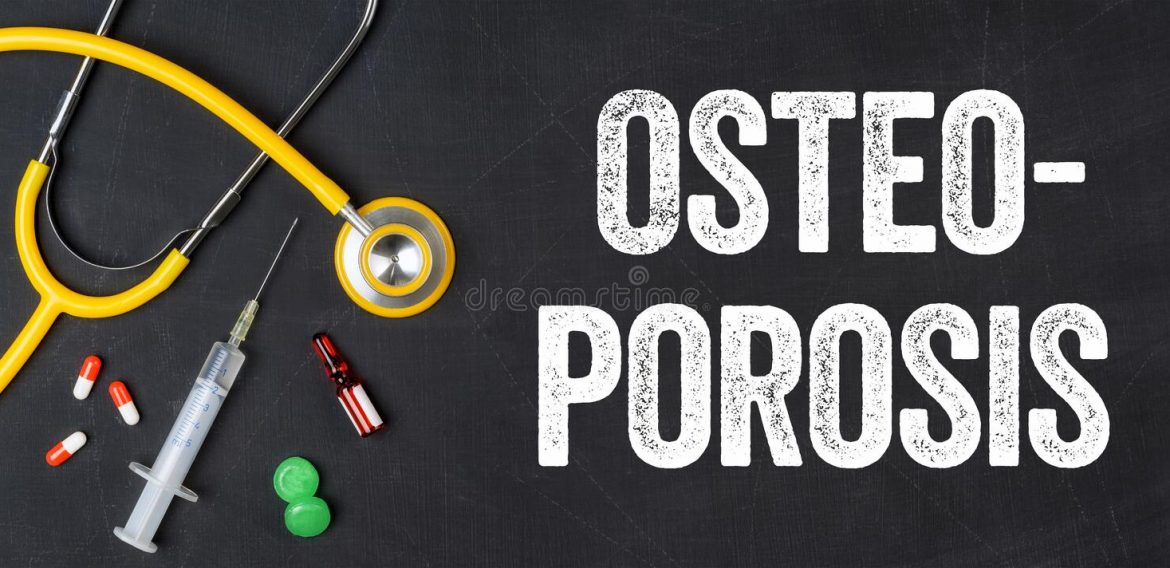Sample Assignment on Action Plan for Osteoporosis
Introduction
Osteoporosis is a chronic condition with high morbidity and morality, whose sequelae are costly to mange (Osteoporosis prevention, diagnosis and therapy, 2001). Osteoporosis is often a silent disease that becomes symptomatic after a fracture (Badamgarave and Fitzpatrick, 2006).
Research indicated that osteoporosis can be prevented by combining full prevention techniques with effective and timely pharmacotherapy (Burge, Dawson-Huges and Solomon, 2005). A systematic review and meta-analysis of randomized controlled trials of cyclic Etidronate, Alendronate, and Risedronate indicate that bisphosphonates increase bone mineral density (BMD) in the spine and hips, and can reduce the risk of vertebral fractures by 30-50% (Genant, Cooper, and Poor, 1999). Among fractures, hip fractures are responsible for the greatest health care expenditures. The on-year morality from hip fracture is 1 in 5 and almost two thirds of these patients never regain pre-fracture activity status (Genant, Cooper, and Poor, 1999). Vertebral fractures are fairly common, and they increase morality and raise the risk of further fractures and deformity. Yet their adverse effects are often underestimated.
While prevention strategies have been proved effective, less than half of the patients diagnosed with OP regularly take their medications and timely pharmacotherapy. This is an alarming situation where patients’ behaviour needs to be analyzed and some suitable action plan needs to be formulated in order to help the OP patients overcome this problem. It is also imperative to understand why patients are not adherent to their medications and timely pharmacotherapy. One hypothesis related to the asymptomatic nature of the disease. At-risk patients do not realize the importance of taking their medications until an adverse event occurs (Report of the Surgeon General, 2004).
Gold et al, in a review of studies addressing adherence to bisphosphonate monotherapy reported in Medline from 1975 to 2005, identified factors related to non-adherence. These factors included cost, adverse effects, dosing frequency, education about disease, patient follow-up and patient involvement in treatment decisions (Aspects of Osteoporosis, 2008). Another study surveyed 500 European physicians (PCPs and Rheumatologists) and 502 women aged 60 and older with postmenopausal osteoporosis who had taken or were taking bisphosphonate therapy. The authors described the gap between patients’ beliefs and physicians’ perceptions regarding medications (Badamgarave and Fitzpatrick, 2006).
Commonly referred to as a pediatric disease with geriatric consequences, osteoporosis actually begins with choices and behaviors developed during childhood and adolescence. Many children have grown up hearing requests from mom or dad to “drink your milk!” or “turn off the TV and go play!” If more parents gave this type of advice and more children and teenagers heeded it, osteoporosis could be eliminated in future generations. Unfortunately, there is mounting evidence that the dietary and exercise habits of today’s youth are resulting in early bone weakness. Khosla et al. (2003) reported a significant increase in arm fractures over the past 30 years. Other research has resulted in similar findings (Goulding et al., 2004; Wyshak, 2000). Changing patterns of dietary intake and exercise may be a causative factor.
Osteoporosis was viewed until recently as a normal part of the aging process. Over the past decade empirical research has demonstrated the effectiveness of diet (Bonjour et al., Heaney, 2000) and exercise (Lloyd et al., 2002; Lloyd et al., 2000; Welten et al., 1994) in the prevention and treatment of osteoporosis.
Several studies have been conducted to evaluate the perception and behaviours of patients with regard to their medication and imparting awareness among the patients of Osteoporosis. These educational programs were successful in promoting knowledge attainment about osteoporosis, but failed to demonstrate long-term changes in exercise or calcium intake. Werner (2004) deemed this a weakness of osteoporosis educational programs finding that most “educational interventions are accompanied by an increase in knowledge, but no change in behavior” (p. 115). The community-based osteoporosis studies used behavior change to measure the effectiveness of their educational presentation.
Perhaps the problem lies not in the ineffectiveness of the educational presentation, but in the measurement of change. Permanent behavior change is a process that requires time and motivation. Many health education theories describe change as a stage process that begins with knowledge attainment and ends with permanent behaviour alteration. Although the long-term goal for osteoporosis education remains an increase in bone building and bone preserving behaviours, there are incremental steps that can be measured. The Precaution Adoption Process Model (PAPM) developed by Weinstein and Sandman (2002) is a stage-based health education theory that describes the interim steps in the change process. This model offers a clear delineation of individual stages and outlines the criteria for reaching the next level of change. This theory has been applied to prior osteoporosis research (Blalock et al., 1996; Blalock et al., 2000; Sharp & Thombs, 2003) and other health behavior areas.
The PAPM outlines seven sequential stages that an individual must move through in order to enact and maintain health behavior change. Prior osteoporosis education research has attempted to measure a move from stage one (lack of knowledge) to stage six (taking precautionary action) with little attention to the change process. Short educational presentations such as those reported by Brown and Schoenly (2004); Curry et al. (2002) and; Ribeiro and Blakeley (2001) have been successful in increasing knowledge, thus moving participants along the change continuum. Yet, these interventions did not move participants into an action stage.
There are several steps that a participant must move through before a behavioral change is evident; prior osteoporosis research has not addressed these interim stages. To move forward in the change process an individual must understand the severity of a health threat and acknowledge personal risk (Weinstein & Sandman, 2002). This concept is not unique to the PAPM. Several health education theories suggest individuals must first perceive themselves as susceptible to a threat in order to make life-style changes (Janz, Champion, & Strecher, 2002). Osteoporosis is not considered to be a significant health threat by most individuals. In a 2002 world-wide study of women’s perceptions of their personal risk of developing osteoporosis the International Osteoporosis Foundation (IOF) discovered 8 in 10 women did not believe they were at risk for developing this disease. In a similar study of 128 girls, less than half were concerned about the possibility of developing osteoporosis (Anderson & Auld, 1996). Osteoporosis is not recognized for the common potential threat it represents. One in two women and one in eight men will experience a fracture caused by osteoporosis (National Osteoporosis Foundation [NOF], 2002).
Positive behavioral health change requires an individual to first recognize and then acknowledge their personal risks (Witte, Meyer, & Martell, 2001). Without these preliminary steps there is little motivation to enact change. It is clear that the threat of osteoporosis is not being taken seriously. Only when this disease begins to be perceived as a real and imminent threat will individuals become willing to make necessary changes in behavior and lifestyle. It is vital that teens embrace these behaviors before it is too late. Peak bone density, which represents the greatest amount of bone an individual will have in their lifetime, finalizes during adolescence. It is never too late to improve bone density, but it is impossible to exceed the peak bone density that was established during the teen years.
Rationale
This research has the potential to impart substantial awareness to the individual selected for this study and help her overcome her hip problem and also by helping the patient progress along the health change continuum. In addition, this paper may also offer a template to health professionals who lack formal training in health education through the action plan highlighting the individual needs of a patient. .

Research Method
The author has chosen two methods of research for this study: the first is the review of the literature which was conducted by search relevant information from libraries and peer reviewed journals and articles. The second is the case study of a selected individual suffering Osteoporosis.
The client chosen for this study is a 63 year old lady with Osteoporosis. Her Mother suffered from Osteoporosis and as a result needed a hip replacement. The client has shown a desire complete a charity run such as the Great North Run to raise money and awareness for Osteoporosis. Lady X is aware that she will need to significantly increase her fitness levels, also she would like an action plan that incorporates a training regime suitable for needs as an Osteoporosis suffer.
In order to assess the particular needs of the client for this action plan, a questionnaire based survey was conducted in order to collect necessary information from the patient. Based on the information provided by the client, an action plan will be presented in the following sections.
Needs analysis:
As discussed in the review of the literature, there are two fundamental problems with the patients of Osteoporosis. The first is the lack of substantial awareness about the problem and the second is their particular behaviour that needs to be changed in order to accommodate necessary action plans for them to act upon.
In the first place, the individual client needs to be imparted all the basic necessary information about the Osteoporosis and how preventive measures can reduce the severity of the problem. Once the client is knowledgeable about the problem, it is imperative to educate her to adopt particular behaviour for regular medications and physical exercise. Both of these needs were assessed through personal contact with the client and prolonged sittings with her which covered her early life behaviour and family background. As discussed previously, client’s mother also suffers Osteoporosis, so it seems imperative to focus on their family behaviour.
The particular personal information that the research collected through questionnaire shows that the client smokes and drinks regularly, does not adhere to any particular dietary program and has family history of Osteoporosis. Further, she is worried about the negative impact of taking regular exercise believing the exercise could harm her bones. Thus, this information reveals she needs better awareness of the Osteoporosis as well as regular dietary, medication, and exercise plans to overcome the problem.
Below is the action plan prepared considering her particular individual needs.
Action Plan
| Area of Need | Action | By Whom |
| Control of Diet | Take simple foodHave meals only twice a day, a good breakfast and light dinner. In lunch, take only juices or a fruits.Use 2-percent milk instead of cream. Have fruit instead of a cookie on Monday, Wednesday and Friday. Vegetables and fruits (not juice, which has little fiber) Whole-grain or bran breads, pastas, and cereals Legumes (beans) and peas | Client herself (the reason diet is an important ingredient of the action plan is that balanced diet can help strengthen the bone structure in Osteoporosis |
| Exercise | Take exercise regularly and start with light exercise like jogging and walking in open space.At morning, go to a nearby park and take up some yoga exercise. Stretch your body and breathe in fresh year. | Client herself (Regular diet and exercise are two fundamental plans for Osteoporosis patients which are even more necessary than the medication). |
| Maintain diet control plan take regular medicines | Check if the diet is under controlMaintain chart of weight and BP in order to observe progress. | Health worker |
Summary and Limitations:
In the previous sections, the researcher has discussed in detail the salient causes of Osteoporosis, how particular behaviour of patients suffering with Osteoporosis impact positively or negatively the symptoms and what are the best ways to overcome this disease. For this purpose, the researcher reviewed the literature and also conducted a survey with the selected client. The client is a typical victim of Osteoporosis in the right age when people are prone to Osteoporosis and also she has all the habits of developing the problem through regularly smoking and drinking and avoiding regular exercise. Thus, it was necessary to formulate an action plan which could improve her behaviour towards the problem and improve herself through regular diet and exercise.






You must be logged in to post a comment.